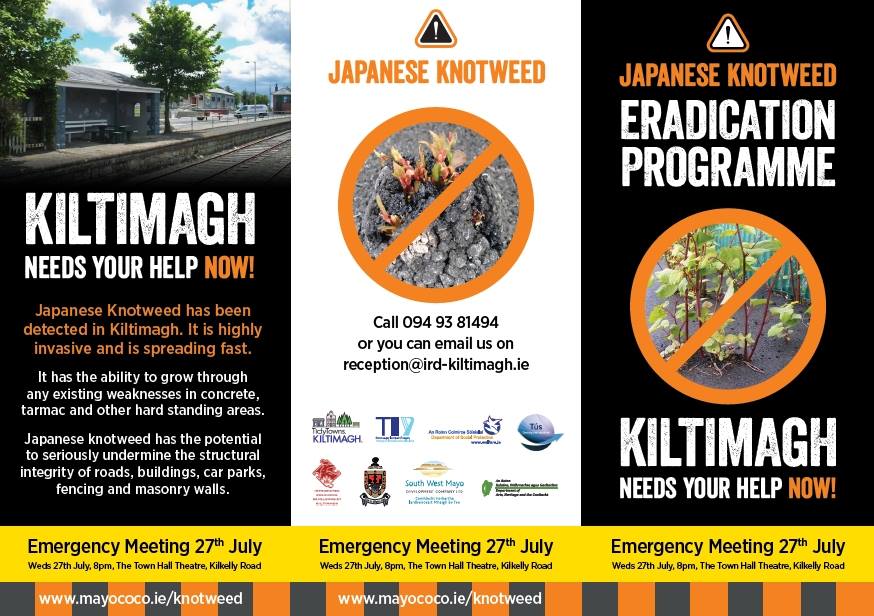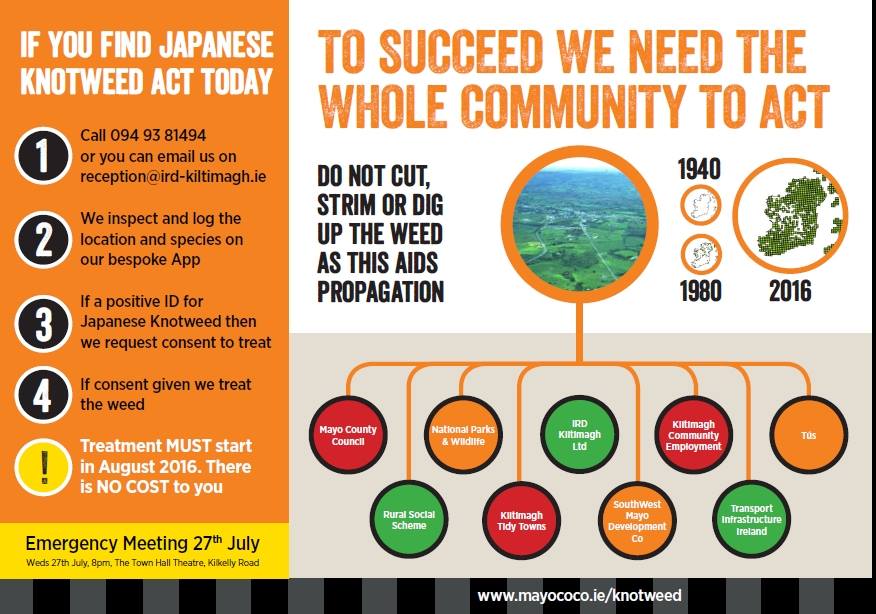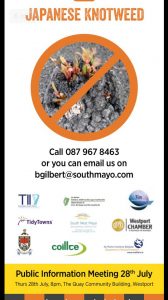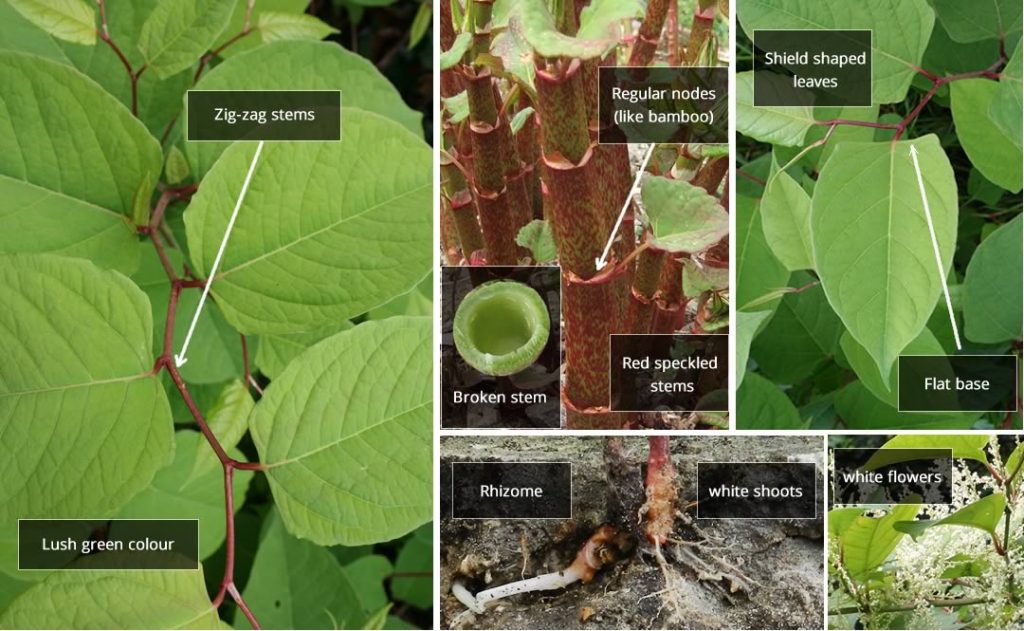Japanese Knotweed Mayo Meetings
Japanese Knotweed Mayo Meetings are being held this week in Kiltimagh and Westport. As you probably already know, Japanese Knotweed is classed as an “Invasive Species”. Japanese Knotweed is indeed highly invasive and can do extreme damage to driveways, walls and buildings foundations. You should not cut Japanese knotweed as this actually promotes its growth. Also any cuttings, even as small as your fingernail will take root and grow new plants. It is extremely invasive.
Japanese Knotweed meeting in Kiltimagh
Japanese Knotweed information meeting in Kiltimagh takes place on Wednesday the 27th of July at 8pm in the town hall theatre on Kilkelly Rd. Phone 094 93 81494 or e-mail reception@ird-kiltimagh.ie.
Japanese Knotweed meeting in Westport
Japanese Knotweed meeting in Westport takes place on Thursday the 28th of July at 8pm in the Quay community building Westport. Phone 087 9678463 or e-mail bgilbert@southmayo.com.
How is the species spread
Even though Japanese knotweed plants flower the principal means of spread is entirely through the deliberate or accidental movement of rhizome fragments or cut stems. Japanese knotweed has an extraordinary ability to spread vegetatively from crown, stem and rhizome (underground root) if disturbed. Even tiny amounts of cut stem, crown or rhizome are capable of producing a new plant. Controlling spread is therefore dependent on preventing the spread of the stem, crown or rhizome.
If you do find Japanese knotweed on your property, the most important thing that you can do is prevent any further spread of the species. Do not strim, cut, flail or chip the plants as tiny fragments can regenerate new plants and make the problem even more difficult to manage. It is also advised not to dig, move or dump soil which may contain plant material as this may contribute to its spread. Eradication of Japanese knotweed can be controlled successfully through the application of appropriate herbicides by a competent person. However eradication of this plant requires planning, as follow up treatments are usually required, and consideration needs to be given to management and disposal of dead plant material, and to the treatment of contaminated soils. It is advised to prepare a management plan, and to get expert help before tackling any significant infestation of this species.
Japanese knotweed and the law
Regulations 49 and 50 of the European Communities (Birds and Natural Habitats) Regulations 2011 make it an offence to
-
plant, disperse, allow dispersal or cause the spread of Japanese knotweed.
-
keep the plant in possession for purpose of sale, breeding, reproduction, propagation, distribution, introduction or release.
-
keep anything from which the plant can be reproduced or propagated from without a granted licence.
-
keep any vector material, in this case soil or spoil taken from Japanese knotweed, for the purposes of breeding, distribution, introduction or release.
Useful Links for Japanese Knotweed
https://www.knotweedsurvey.ie/
- National Tidy Towns Awards 2025 - October 24, 2025
- Weekly Clean Ups Resume - July 2, 2025
- 3 Day Cleaning Blitz - June 18, 2025






Recent Comments